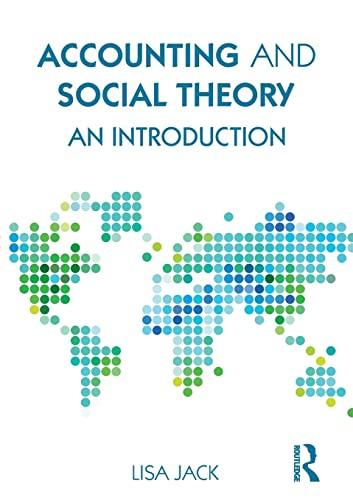please answer the following questions
Problem 5-4AA (Static) Perpetual: Alternative cost flows LO P3 Montoure Company uses a perpetual inventory system. It entered into the following calendar-year purchases and sales transactions. Date Activities Units Acquired at Cost Units Sold at Retail Jan. 1 Beginning inventory 600 units @ $45 per unit Feb. 10 Purchase 400 units @ $42 per unit Mar . 13 Purchase 200 units @ $27 per unit Mar . 15 Sales 800 units @ $75 per unit Aug . 21 Purchase 100 units @ $50 per unit Sept. 5 Purchase 500 units @ $46 per unit Sept. 10 Sales 600 units @ $75 per unit Totals 1, 800 units 1, 400 units Required: 1. Compute cost of goods available for sale and the number of units available for sale. Cost of goods available for sale Number of units available for sale units 2. Compute the number of units in ending inventory. Ending inventory units3. Compute the cost assigned to ending inventory using (a) FIFO, (b) LIFO, (c) weighted average, and (d) specific identification. (For specific identification, units sold consist of 600 units from beginning inventory, 300 from the February 10 purchase, 200 from the March 13 purchase, 50 from the August 21 purchase, and 250 from the September 5 purchase.) Complete this question by entering your answers in the tabs below. Perpetual FIFO Perpetual LIFO Weighted Average Specific Id Compute the cost assigned to ending inventory using FIFO. (Round your average cost per unit to 2 decimal places.) Perpetual FIFO: Goods Purchased Cost of Goods Sold Inventory Balance Date # of Cost per # of units Cost per Cost pe units unit sold unit Cost of Goods Sold # of units Inventory unit Balance Jan 1 600 @ $45.00 = $ 27,000.00 Feb 10 Mar 13 Mar 15 Aug 21 Sept 5 Sept 10 Totals Perpetual FIFO Perpetual LIFO >3. Compute the cost assigned to ending inventory using (a) FIFO, (b) LIFO, (c) weighted average, and (d) specific identification. (For specific identification, units sold consist of 600 units from beginning inventory, 300 from the February 10 purchase, 200 from the March 13 purchase, 50 from the August 21 purchase, and 250 from the September 5 purchase.) Complete this question by entering your answers in the tabs below. Perpetual FIFO Perpetual LIFO Weighted Average Specific Id Compute the cost assigned to ending inventory using LIFO. (Round your average cost per unit to 2 decimal places.) Perpetual LIFO: Goods Purchased Cost of Goods Sold Inventory Balance Date # of Cost per # of units Cost per Cost of Goods units # of units Cost per nventory unit sold unit Sold unit Balance Jan 1 600 @ $45.00 = $ 27,000.00 Feb 10 Mar 13 Mar 15 Aug 21 Sept 5 Sept 10 Totals Perpetual FIFO Weighted Average3. Compute the cost assigned to ending inventory using (a) FIFO, (b) LIFO, (c) weighted average, and (d) specific identification. (For specific identification, units sold consist of 600 units from beginning inventory, 300 from the February 10 purchase, 200 from the March 13 purchase, 50 from the August 21 purchase, and 250 from the September 5 purchase.) Complete this question by entering your answers in the tabs below. Perpetual FIFO Perpetual LIFO Weighted Average Specific Id Compute the cost assigned to ending inventory using weighted average. (Round your average cost per unit to 2 decimal places.) Weighted Average Perpetual: Goods Purchased Cost of Goods Sold Inventory Balance Date # of Cost per # of units units Cost per cost of Goods Sold Cost per Inventory unit sold unit # of units unit Balance Jan 1 600@ $ 45.00 = $27,000.00 Feb 10 Average Mar 13 Mar 15 Aug 21 Average Sept 5 Sept 10 Totals 3. Compute the cost assigned to ending inventory using (a) FIFO, (b) LIFO, (c weighted average, and (d) specific identification. (For specific identification, units sold consist of 600 units from beginning inventory, 300 from the February 10 purchase, 200 from the March 13 purchase, 50 from the August 21 purchase, and 250 from the September 5 purchase.) Complete this question by entering your answers in the tabs below. Perpetual FIFO Perpetual LIFO Weighted Average Specific Id Compute the cost assigned to ending inventory using specific identification. For specific identification, units sold consist of 600 units from beginning inventory, 300 from the February 10 purchase, 200 from the March 13 purchase, 50 from the August 21 purchase, and 250 from the September 5 purchase. (Round your average cost per unit to 2 decimal places.) Specific Identification Goods Purchased Cost of Goods Sold Inventory Balance Date # of Cost per # of units Cost per Cost of Goods Cost per Inventory units unit sold unit Sold # of units unit Balance January 1 600 @ $45.00 = $ 27,000.00 February 10 March 13 March 15 Aug 21 Sep 5 Sep 10 Totals 4. Compute gross prot earned by the company for each ofthe four costing methods. {Round your average cost per unit to 2 decimal places.) Less: Cast ofgoods sold 5. The company's manager earns a bonus based on a percent of gross profit. Which method of Inventory costing produces the highest bonus for the manager? 0 Weighted Average 0 FIFO 0 LIFO 0 Specific Identification












